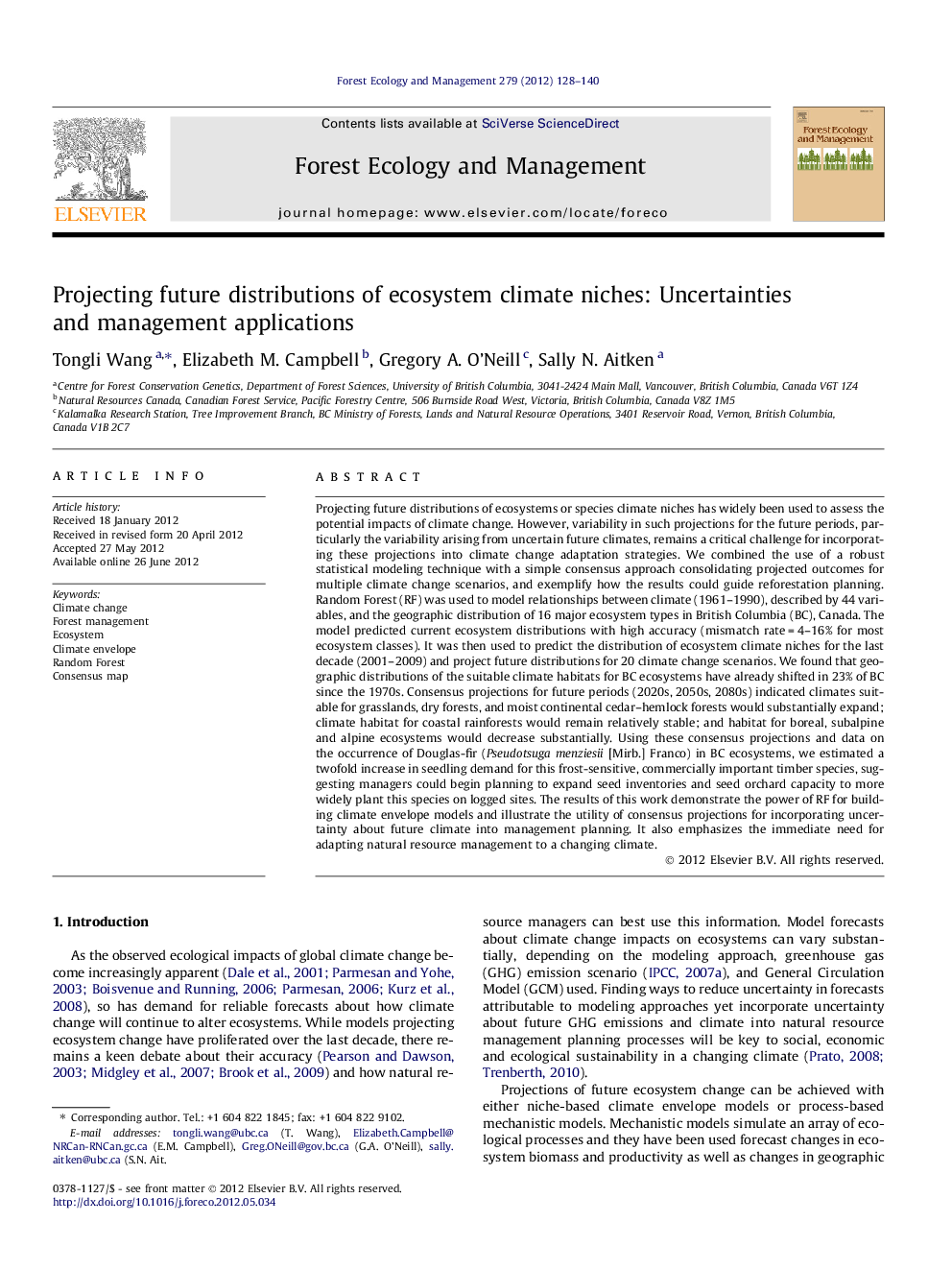| کد مقاله | کد نشریه | سال انتشار | مقاله انگلیسی | نسخه تمام متن |
|---|---|---|---|---|
| 87546 | 159255 | 2012 | 13 صفحه PDF | دانلود رایگان |

Projecting future distributions of ecosystems or species climate niches has widely been used to assess the potential impacts of climate change. However, variability in such projections for the future periods, particularly the variability arising from uncertain future climates, remains a critical challenge for incorporating these projections into climate change adaptation strategies. We combined the use of a robust statistical modeling technique with a simple consensus approach consolidating projected outcomes for multiple climate change scenarios, and exemplify how the results could guide reforestation planning. Random Forest (RF) was used to model relationships between climate (1961–1990), described by 44 variables, and the geographic distribution of 16 major ecosystem types in British Columbia (BC), Canada. The model predicted current ecosystem distributions with high accuracy (mismatch rate = 4–16% for most ecosystem classes). It was then used to predict the distribution of ecosystem climate niches for the last decade (2001–2009) and project future distributions for 20 climate change scenarios. We found that geographic distributions of the suitable climate habitats for BC ecosystems have already shifted in 23% of BC since the 1970s. Consensus projections for future periods (2020s, 2050s, 2080s) indicated climates suitable for grasslands, dry forests, and moist continental cedar–hemlock forests would substantially expand; climate habitat for coastal rainforests would remain relatively stable; and habitat for boreal, subalpine and alpine ecosystems would decrease substantially. Using these consensus projections and data on the occurrence of Douglas-fir (Pseudotsuga menziesii [Mirb.] Franco) in BC ecosystems, we estimated a twofold increase in seedling demand for this frost-sensitive, commercially important timber species, suggesting managers could begin planning to expand seed inventories and seed orchard capacity to more widely plant this species on logged sites. The results of this work demonstrate the power of RF for building climate envelope models and illustrate the utility of consensus projections for incorporating uncertainty about future climate into management planning. It also emphasizes the immediate need for adapting natural resource management to a changing climate.
► Refined the model with climate variables at different time scales and a sampling strategy.
► Selected 20 climate change scenarios in the context of GCMs, GHG scenarios and model runs.
► Over 20% of BC has shifted to a different ecosystem climates since 1961–1990.
► Consensus projections considered uncertainty arising from uncertain future climate.
► A case study showed the application of consensus projections in forest management.
Journal: Forest Ecology and Management - Volume 279, 1 September 2012, Pages 128–140